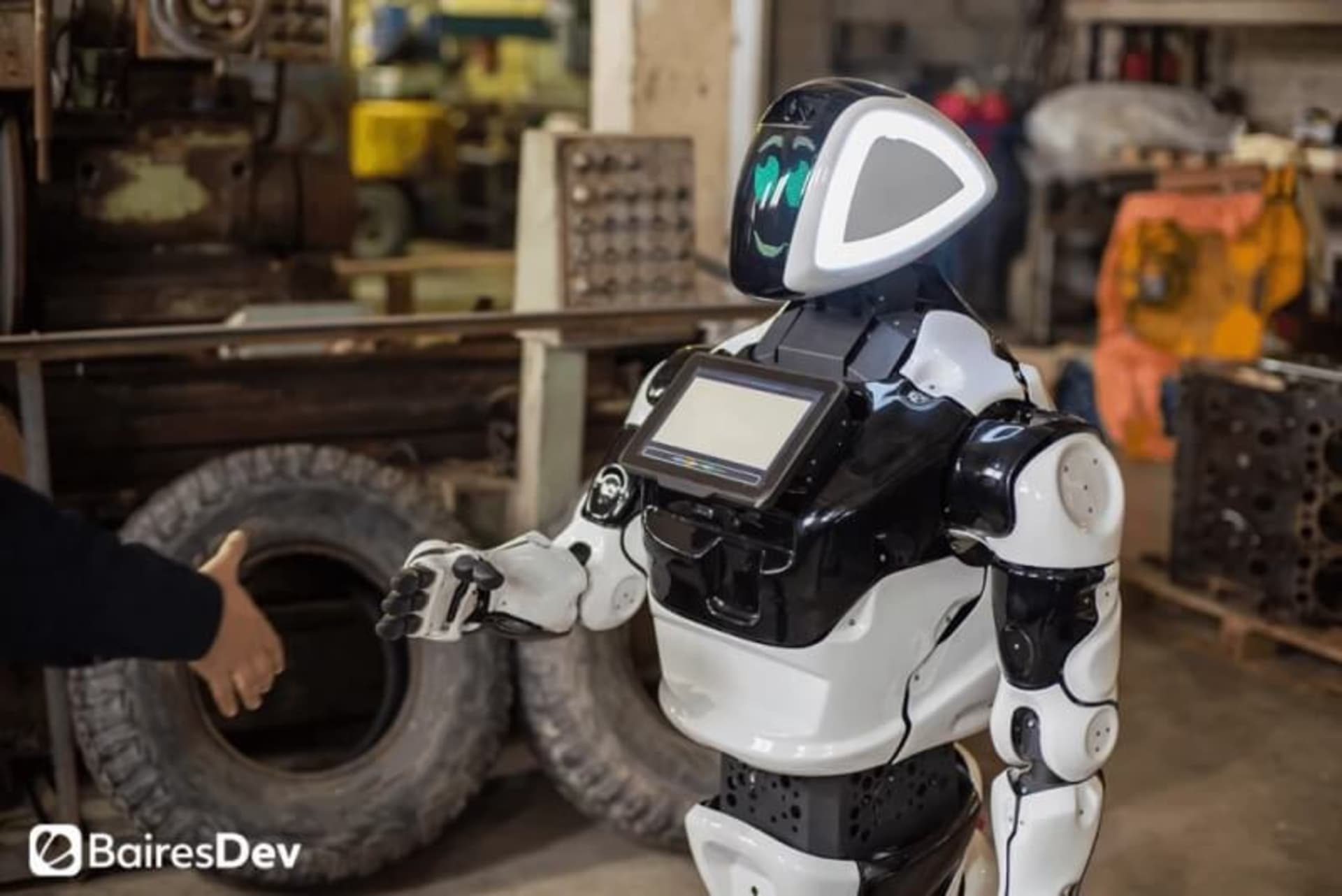It’s highly likely that, whenever you hear someone talk about robots, the images that come to your mind are influenced by TV and movie depictions. Thus, you are likely picturing more or less clunky humanoids figures that can range from the Jeeves-like translator C3PO from Star Wars to the caustic Bender from Futurama. However, modern robots are far from what you’re used to seeing on the screen.
Though it’s possible that we could end up with highly intelligent robots alla Haley Joel Osment in Spielberg’s AI, the robots we have today are far less limited. That doesn’t mean that the robots we can find in your everyday lives aren’t helpful – quite the contrary! While they are quickly becoming the norm (especially in industries like the auto industry), they are expanding to other, less expected sectors.

What’s more – you might feel like dealing with robots is a distant possibility reserved for your grandchildren. That’s far from being the truth. The probabilities that you’ve interacted with a robot already are very high, especially with the ones found in the service industry. Let’s review some of the robots that we can find in your everyday lives already and take a quick look into what we can expect for them in our no-so-distant future.
Robots you can find right now
Wouldn’t it be nice to have some help around the house to get the chores done? And what about having a personal assistant capable of tagging along to carry your groceries when you go shopping or that can entertain the kids while you have to work? What’s more – wouldn’t it be great to have robots that could aid with medical and educational purposes, such as assisting people with disabilities or just plain teaching things?

Incredibly enough, all of those things are already covered by modern robots or prototypes. Here are some of the most interesting ones:
- Service industry: believe it or not, one of the industries that are using more and more robots with each passing day is the service sector. The robot-as-a-service (RaaS) field is thriving thanks to a new understanding of what people want and need when dealing with a specific service. China’s food industry is a perfect example of this. From robotic baristas capable of making the perfect coffee to robot servers that bring dishes to tables, the Asian country restaurants and cafès are surely leading the way. The tourism field is another great example. There’s a hotel in Japan that is entirely staffed with robots that are able to provide information, take petitions, make check-ins and outs, and more, all using voice and facial recognition technology. That’s far from being the only thing. There is robotic luggage that follows you around, robot butlers and concierges, and even robots that aid in the security at airports.
- Home: even old TV shows like the Jetsons envisioned a future where we would have robot maids and butlers doing our daily chores for us. Interestingly enough, that future has come already, and there are several robots to prove it. The most common examples include robotic vacuum cleaners that range from basic models that move around according to basic patterns to advanced robots that memorize your entire home to decide which is the best course of cleaning action.
There are now robots that can take care of your lawn automatically and others that can clean your pool. There are robots that can help you carry around things and others like Lynx, which is a robotic embodiment of Amazon’s Alexa. And then there are robots like ASUS’ Zenbo that acts as a companion, shares its emotions with you, reads to your children, and even guards your home when you’re away. - Education: don’t worry, we haven’t reached the point where a robot will stand in front of the class to teach – not yet anyway. However, we are that far off from that reality. There are robots that work as teachers’ assistants and robots that are capable to teach kids how to talk and even sing.
Yet, the most common use for robots in education is to provide kids with disabilities a high-quality education by keeping them up to speed with the rest of the kids. Thus, there’s Nao, a robot that can connect with children with autism and adapt to their specific needs to keep their education going. There are also robots like the ones developed by VGO that can assist children that can’t attend school because of injuries or illnesses. These remote robots can make those kids feel like they are actually in class without posing any problem for them. - Medicine: the medical field has always been adept at new technologies that can help provide better care and treatments. For instance, the DaVinci system, a robot that’s considered standard for robot-assisted surgery, has been around for 18 years now. It’s true that this is more like a tool that needs the input of a surgeon, but the medical field is moving forward in developing robots capable of acting on their own.
Thus, there are disinfecting robots that autonomously clean patients’ rooms through high-powered UV rays to ensure that no bacteria survives, which reduces the number of airborne infections and the development of more resistant strains. There are also new gyroscopically actuated robotic limbs that, combined with bionic skins and neural implants, can replace a traditional prosthetic. The same goes for exoskeletons that can help people with all kinds of paralysis to move again. - Assisted living: one of the most promising sectors for robots is the one where they can assist elderly people. That’s because they can provide help when moving people, preventing accidents, reminding of medications or treatments, and keeping in touch with family and medical providers.
Take Projet Romeo as a great example. Unlike some of the robots in this article, this actually is a humanoid robot that can open doors, climb stairs and reach for objects, providing the services an in-house caretaker could give. A similar robot is called Robear, that’s a teddy bear of sorts that was designed to lift elderly people from their beds and into the wheelchairs, preventing accidents and given elders more autonomy. More archaic robots already in the market include a robotic chair that’s capable of moving elderly people around, which can be controlled through a joystick if needed.
The most common robot programming languages
All of the above is powered through a combination of powerful technologies from the software and hardware world. While advanced engineering and robotics is an obvious must to develop all these robots, the software development community hasn’t reached an agreement as to which is the best language to power these robots. Naturally, this has to do with the particular choices, skills, and expertise of each member of the development team.
However, it’s safe to say that there are various types of languages that you can learn to start working in robotics programming. That’s because robots are programmed either by guiding or by off-line programming. The first one refers to how a robot is programmed to be guided from one point to another to cover all of the steps of an operation. Robots programmed like this follow a preloaded set of instructions.
For its part, off-line programming implies that the robot can receive instructions through a computer to act according to that input. These kinds of robots are mostly defined by tasks or objectives, so they need to be programmed through a combination of a high-level language. These include:
- C/C++: considered to be the best starting point for developers new to the robotics industry, these general-purpose languages allow interaction with low-level hardware and provide real-time performance. Besides, they are imperative and object-oriented as well as mature, which means that the learning curve will be gentler.
- Python: this is a high-level language that’s great to automate, teach, and post-process robotic applications. Its main strength resides in its capability to write scripts that calculate and simulate the entire robot program. This saves you from manually teaching every statement to the robot. This also helps in testing and refining the program’s underlying logic. As if that wasn’t enough, Python can write sophisticated software with fewer lines of code and it has a lot of robotic frameworks that can save you a lot of time.
- Java: another popular choice to work on robotics, Java offers you a series of APIs that were specifically created for robotics. From command-and-control recognizers to speech synthesizers, there are a lot of components that can be used to build complex robotic systems. Besides, Java is one of the preferred languages to develop artificial intelligence systems, including machine learning algorithms and neural networks that can be crucial for the development of advanced robots.
Though presented as options here, it’s best if you see all of these languages as complementary when jumping into the robotics development world. That’s because each of these languages has its strengths, weaknesses, and uses, so different applications will call for knowledge in different programming languages.
Of course, the more languages you know, the better, as robotic programming uses a lot of different types that take care of different aspects of a robot. In fact, if you’re considering getting into robotics development, you have to understand that you’ll need a varied knowledge in different languages. Additionally, you have to be prepared for a rough transition, as the complexity of robotics projects can be very high.
The future of everyday robots
As you’ve surely noticed, most of the robots explained above are fairly limited. Though they are impressive in their own right, some of them still need human input while others are incapable of making complex decisions. That will surely change in the future, as artificial intelligence (AI) continues to evolve and companies start creating robots that use that AI for more complicated tasks.
In the meantime, it’s highly likely that we will continue to see robots like the ones mentioned above as components of other systems, i.e. driving assistants. That’s because the underlying technology needed to create robots that see, feel, and act like humans isn’t fully developed yet – especially the part about the intelligence.
This is very important to understand, as the C3POs, Benders, and Haley Joel Osments we are being promised by science fiction or by overly excited AI experts are somewhat far from being a reality. Instead, we’ll see more and more robots that are closer to intelligent tools and that will undoubtedly increase the quality of our daily lives, from how we eat to the treatments we get when we go to the hospital.








